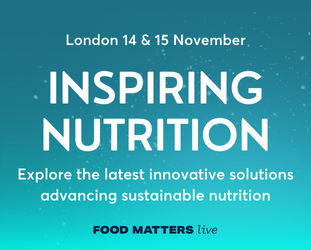The science of sugar: how the sweet stuff can impact physical and mental health

Sugar is an integral ingredient in many foods. Naturally occurring sugars can be found in fruit, vegetables, unrefined carbohydrates as well as some dairy products. Added sugars or free sugars – granulated sugar which can come in a white or brown colour – tend to be found in more manufactured and processed products, like sugar-sweetened juice drinks, fizzy drinks, sports drinks, sweetened beverages, confectionary, desserts and various syrups, jams, jellies and sauces.
Natural sugars help to give us the nutrients and energy we need because they tend to also be mixed with fibre and other key minerals that help our bodies stay healthy. However, added sugars don’t provide the same benefits. Despite this fact, they still make up a dangerous amount of our everyday diet. In 2019, the UK population consumed nearly three million tonnes of sugary food, an increase of 3.4% from 2015.
So why are we so obsessed with sugar? When was it first discovered? What does it do to our bodies and brains, and why has it taken so long for us to become aware of its risks?
Where sugar comes from
Added sugar has a long history and took a while to make its way into what we eat and drink. The ingredient, which comes from the sugar cane crop is said to have first originated in New Guinea around 8000 BC. It eventually made its way across the world to India, where it was first extracted from the crop and boiled down to make the brown lumpy unrefined sugar mixture, jaggery. According to Food Historian Neil Buttery, who spoke on the history of sugar in a Food Matters Live Podcast episode, academics still aren’t sure if it arrived there naturally or if people transported it over. From India, sugar was then adopted by the Persians – although it took some 1,000 years for interest to really take off. The first sugar plantation was built in India around the eighth century.
The obsession with sugar began to develop when empires started to grow – the Islamic Empire, for example, was fuelled by sugar production across the Middle East, Northern Africa, the Iberian Peninsula, and parts of Asia. Sugar only started to become prominent in Europe following the Crusades across the 12th century when the cane crop was tasted by religious crusaders for the first time. They apparently enjoyed the taste so much that they transported large amounts back to their respective homelands. Once the Holy Land had been conquered, more sugar plantations were set up. Europeans learned how to cultivate the ingredient and began to think about how they could produce larger amounts of sugar.
There is a dark history attached to the ingredient, which started to emerge during the period of western colonialism. The sugar slave trade began on the Madeira and the Canary Islands during Portuguese and Spanish expansion and continued once Columbus travelled to present day North and South America, where he brought over sugar cane cuttings to use for new plantations. Eventually, African slaves were forced to work on sugar plantations in appalling conditions. According to Buttery, if Columbus hadn’t set foot in the New World it’s highly likely the sugar plantations would have died out.
The Portuguese had a monopoly on the slave trade, especially in Brazil. Here, they found out how to make sugar production cheaper, and how to refine the sugar into white grains, instead of clarifying it back in Europe. Brazil soon became the centre of sugar production.
Britain started to get involved in sugar production in the sixteenth century. During the 1620s colonisers in the West Indies built a plantation and began transporting sugar cane crops over from Brazil. Chattel slavery was practiced on these plantations from 1661. A million tons of sugar are estimated to have been produced between 1766 and 1791, and sugar plantations helped to build the economic foundation of the British Empire.
Although colonial slavery conditions are no more, issues including forced and child labour, and heat-induced illnesses still affect the present-day sugarcane industry. Many farmers and workers are also paid extremely low wages, which makes it hard for them to access basic necessities.
Sugar and the brain
Modern research has found that we innately enjoy consuming sweet foods as a species. As bioarchaeologist and palaeoeconomist Alan K Outram explains in Food: the history of taste, “There is strong evidence that many hunter-gatherer groups in the past would, at certain times of the year, not only need sources of fat and sugar, but would have craved them. Necessity may well have driven taste.”
Part of the reason behind our ‘need’ for sugar is the impact it has on our brains. When we eat foods with high amounts of sugar, the mesolimbic dopamine system is activated. This is also known as the brain’s reward system, as it allows us to feel pleasure. Sugar is also essential for day-to-day activities – the brain takes energy from the glucose in sugars to help it manage our thinking, memory and learning. In fact, the brain is the organ which needs the most energy in our bodies due to the high concentration of nerve cells and neurons. Sugar, which turns into glucose once the body processes it, is vital for the brain. Having low glucose levels can result in poor brain function, causing us to experience a deteriorating attention span and cognitive function.
The difference between naturally occurring sugars and added sugars is that while the former gives our bodies a mixture of nutrients, the latter only gives us glucose. Free sugars in this form are easier for the brain to metabolise, but too much added sugar in the diet can have several negative consequences for the brain as well as the body.
Studies have shown that consuming sweet foods in some cases can lead to an increased risk of developing major depression. Other studies reveal excess glucose consumption can cause deficiencies in our memory and cognition. A 2012 report, for instance, revealed a connection between excess consumption of fructose (another form of sugar) and the deterioration of memory and learning abilities. Long-term sugar intake in a western diet has also been shown to increase the risk of developing attention deficits and hyperactivity-related disorders.
Despite excess consumption of the ingredient having various proven negative consequences when it comes to brain health, it is important to be cautious in accepting the view that eating sugar can cause addiction, says Dr Richard Mattes, Distinguished Professor of Nutrition Science at Purdue University, Indiana. “My own view is that the brain is a well-protected organ. The level of sweetness that each of us prefers in our food is wildly different. It’s not that for every person, the more sugar you add, the more palatable food becomes.”
“Each of us has a preferred level of sweetness for each food that we consume – for some people it’s low, and for some people it’s high. there isn’t this simple monotonic relationship about intake and preference or reward.”
He adds: “The neurotransmitter levels that one can measure in the brain are a tenth the size to oral stimulation with sugar as they are to drugs of abuse that lead to addiction. It’s really a very different phenomenon.”
Sugar and the body
Sugar is the body’s primary energy source. While the body can turn pretty much any food containing carbohydrates into glucose, it also produces its own sugar to use as energy over long periods when we don’t consume anything at all (during sleep, for instance). The liver tends to supply the sugar we need by turning glycogen into glucose – a process known as glycogenolysis.
As our body can operate in such a way, we don’t actually need added sugar at all for our bodies to properly function, according to the Harvard School of Public Health. This is why foods containing the ingredient are typically listed at the bottom of pretty much all healthy eating food pyramids.
While the negative effects of sugar on our bodies are relatively well known nowadays, the dangers attached to the ingredient only started to be highlighted during the 20th century, and they weren’t easy to get out to the public.
One of the first people who began the conversation on the how sugar can damage our health was the British nutritionist and physiologist John Yudkin. In 1957 he published the article ‘Diet and Coronary Thrombosis’ in the medical journal The Lancet, where he first outlined that sugar was the most important risk factor in developing Type 2 diabetes. Yudkin continued his research into the dangerous effects of sugar, which culminated in a book called Sweet and Dangerous, published in 1972. In this book, he explored how hidden the ingredient is in everyday foods, as well as the link between sugar consumption and heart disease. In 1988, the book was republished with the title Pure, White and Deadly, looking at more of its dangerous links to diseases like dental cavities, liver disease, eye damage and even cancer.
While Yudkin’s research was ground-breaking at the time, the sugar industry in the 1960s was not prepared to see sales fall. A study released in 2016 reveals they helped to fund research which claimed the risk of experiencing a heart attack from consuming saturated fats was far larger than from sugar.
The publication of the first Dietary Guidelines for Americans in 1980s also buried Yudkin’s theories, recommending the population to follow a diet low in fat, saturated fat and cholesterol to help tackle the country’s heart disease epidemic. The UK government released similar dietary advice for its population not long after in 1983. The result of such policies was that the dangers of sugar were left on the side lines.
Interestingly, levels of obesity started to soar in both the US and the UK shortly after this period. Research has shown that between 1999 and 2000, the prevalence of American people who were overweight increased from 55.9% to 64.5%. Extreme obesity levels also went up from 2.9% to 4.7%. In the UK obesity levels increased from 1.8% in 1984 to 6.6% in 2002. Today obesity is at its highest levels, having nearly tripled since 1975, with 800 million worldwide currently living with the disease.
It is only in more recent years that the dangers of sugar and its link to weight gain have been again tested and proven by scientists. As the consumption of sugary drinks increased into the early noughties, studies around the connection of long-term consumption of sugar-sweetened beverages to the risk of mortality began to appear. Research defending sugar’s ties to coronary heart disease (CHD) has also been published in recent years. Led by researchers at Saint Luke’s Mid America Heart Institute in Missouri and the Albert Einstein College of Medicine in New York, the report reveals that a high-sugar diet makes you three times as likely to die from cardiovascular disease, and that consuming sugar overall is more problematic for our health than consuming saturated fats.
The connection between sugar consumption and developing Type 2 diabetes has also been highlighted by scientists in recent years. Zoe Davis, Nutritionist at the UK-based sugar awareness charity Action on Sugar told Food Matters Live: “A higher consumption of sugar sweetened beverages is linked to Type 2 diabetes and worryingly, the number of children with type 2 diabetes is rising due to the increased prevalence of overweight and obesity in children.”
Another part of the body which can be damaged by added sugar is our teeth. If you have ever visited the dentist, you will have likely been told about how sugar increases the risk of dental caries on many occasions. Despite the warnings, our dental health is still being affected by sugar. According to research from Action on Sugar, a quarter of five-year-olds have tooth decay when starting school. Nearly 90% of tooth extraction in zero- to five-year-olds ispreventable, says the charity. In 2019, 23% of five-year-olds were recorded to have had dental decay.
Should it be avoided and how?
According to Dr Mattes, while too much sugar has its negative effects, it doesn’t need to be removed from a diet completely. “It’s frequency and portion size that determines where the problem is,” he says. In fact, in many cases it can play a functional role. “If kids won’t drink milk for example, but we want them to get the protein and the calcium, but they will drink it if that milk is part of a breakfast cereal, or has chocolate in it, it can play a role in helping us achieve our nutrient goals.”
While reducing sugar portions in our diet is the answer to limiting the health risks, many of us are struggling to monitor our intake. As Davis says, “It’s recommended that free sugars provide no more than 5% of our daily total energy intake, however the latest National Diet and Nutrition Survey found that we are all eating much more than this; 2-10 years are consuming 9.6%, 11-18 years are consuming 12%, 19-64 years are consuming 10.5% and 65 years consuming 9.8%.”
It isn’t surprising if many have struggled to limit their sugar consumption up until now, with so much of the food and drink we have access to containing added sugar. This could all soon change in the UK, as legislation which limits the location of food and drink high in sugar, salt, and fat (HFSS) in larger supermarkets is due to be implemented from October 2022. A ban on multi-buy deals will be introduced in October 2023, while a pre-watershed advertising ban for these goods will come into play from January 2024. Some of these new laws were supposed to be brought in this year, but due to rising cost-of-living, the government decided to defer the new rules. Many food companies however have started to reduce the sugar content in some of their products, regardless of this new date. Confectionery producers such as Unilever, who are well known for their ice cream portfolio have also planned to cease the promotion of all their sweet food and drinks to children under 16 years of age.
Whether these reformulations and modifications in the food industry will have a positive impact remains to be seen, but the major difference between the present day and Dr John Yudkin’s time is the level of information that is now available regarding the health risks of added sugar. This research isn’t out there to scare us but to inform us, and we shouldn’t fear the ingredient’s presence in our diets. As Dr Mattes puts it: “Sugar should not be vilified, but it also should not be glorified. It contributes to the quality of life. We just have to be intelligent with how we use it.”









